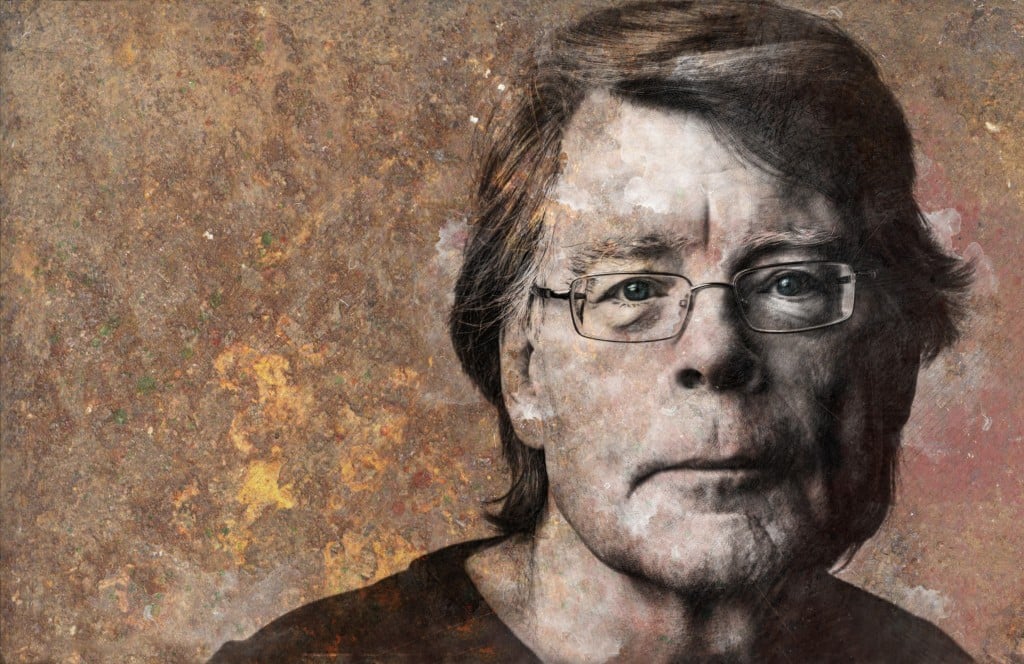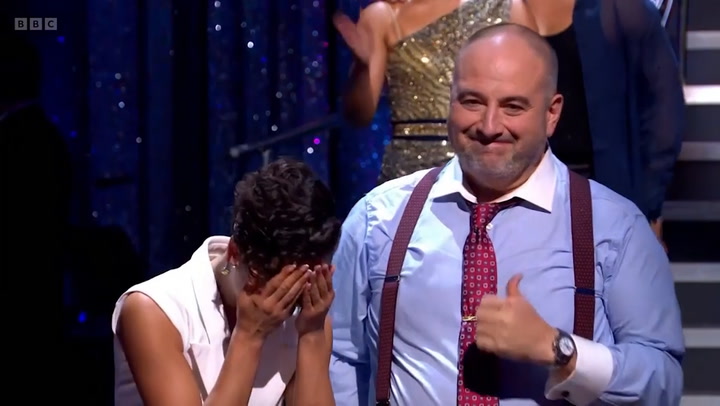The Stephen King Connection: Comparing Stranger Things And IT

Table of Contents
Shared Thematic Elements: Exploring the Overlaps in Storytelling
Both Stranger Things and IT resonate deeply because they tap into universal themes, skillfully woven together to create compelling narratives.
Nostalgia and Childhood Innocence Lost
Stranger Things, set against the vibrant backdrop of 1980s nostalgia, expertly captures the bittersweet essence of childhood. The adventures of Eleven, Mike, Dustin, Lucas, and Will are intertwined with the anxieties of growing up and facing the unknown. The 1980s nostalgia isn't merely a stylistic choice; it amplifies the sense of innocence lost as the children confront the terrifying reality of the Upside Down. This childhood trauma, and subsequent coming-of-age story, forms the emotional core of the narrative.
In IT, the horror nostalgia is equally potent. Pennywise's reign of terror targets the vulnerable hearts of the Losers Club, forever scarring their childhoods. The film masterfully uses Derry, Maine's setting to evoke a sense of unease and dread, reflecting the childhood fears that fester beneath the surface of seemingly idyllic towns. The trauma inflicted by Pennywise fuels their adult lives and shapes the decisions they make. The comparison between the two demonstrates the potent use of nostalgia to enhance the overall narrative.
- Comparative Analysis: Both narratives use nostalgia not just for atmosphere, but to heighten the horror. The idyllic setting contrasts sharply with the darkness the children face, making the threat feel all the more potent and the loss of innocence even more profound.
The Power of Friendship and Facing Fear
The strength of friendship is a recurring motif in both Stranger Things and IT. In Stranger Things, the bond between the core group of friends is their greatest weapon. Their unwavering loyalty and willingness to confront the supernatural threats in the Upside Down are testaments to the power of friendship and the importance of teamwork. Their courage in the face of unimaginable danger underscores the triumph of human connection over the seemingly insurmountable odds.
Similarly, the Losers Club in IT embodies the enduring power of friendship. Their bond, forged in the face of unimaginable terror, allows them to confront their deepest fears and overcome the evil that haunts their town. The enduring strength of their friendship, even as they grow into adulthood, showcases the transformative power of shared experiences and the importance of overcoming fear together. The film depicts the struggles of adulting but highlights that childhood bonds can remain strong.
- Comparative Analysis: Both stories demonstrate that friendship is not just a source of comfort but a vital force in confronting and overcoming adversity. The power of collective strength against overwhelming odds is a central theme in both narratives.
Supernatural Elements and the Horror Genre
Stranger Things employs a blend of sci-fi and horror, introducing the terrifying Upside Down, the Demogorgon, and other supernatural creatures. The show’s unique blend of sci-fi horror and supernatural thriller elements creates a world both familiar and utterly unsettling. The Upside Down, a horrifying parallel dimension, serves as a potent symbol of the unseen terrors that lurk beneath the surface of everyday life.
IT, on the other hand, delves into the realm of cosmic horror and psychological horror. Pennywise the Dancing Clown is a creature of immense power and malevolence, embodying the primal fears that reside in the subconscious. The unsettling atmosphere and the various forms of evil the Losers face create a terrifying and unforgettable experience. The monster is not just a physical threat but a manifestation of the darkest aspects of human nature.
- Comparative Analysis: While different in their specific manifestations of horror, both Stranger Things and IT effectively use supernatural elements to explore themes of fear, trauma, and the power of resilience. Both evoke a sense of dread and suspense, creating captivating narratives that keep audiences on the edge of their seats.
Stylistic Similarities: From King's Prose to Screen Adaptations
Beyond thematic similarities, Stranger Things and IT share striking stylistic parallels that directly reflect Stephen King's influence.
King's Signature Style
The blend of horror and coming-of-age themes is a hallmark of Stephen King's writing, and this is clearly present in both Stranger Things and IT. Both utilize relatable characters with flaws and strengths, allowing viewers to connect with their struggles and triumphs. The detailed settings, a prominent feature in King's novels, contribute to the immersive quality of both productions. The use of character development in both stories is paramount to their success. King's influence on the Stephen King style is pervasive. This horror fiction has had a lasting impact on the genre.
Visual Storytelling
The visual storytelling in both adaptations is striking. Stranger Things uses a specific color palette, emphasizing the stark contrast between the vibrant 1980s aesthetic and the bleakness of the Upside Down. Similarly, IT utilizes cinematography to establish a chilling atmosphere, using shadow play and unsettling imagery to enhance the sense of dread. Both productions show mastery of visual storytelling and atmospheric horror.
Character Archetypes
Both Stranger Things and IT feature similar character archetypes. We see the brave leader (Mike in Stranger Things, Bill in IT), the reluctant hero (Eleven in Stranger Things, Richie in IT), and the outcast (Will in Stranger Things, Beverly in IT). These archetypal figures resonate with audiences, allowing them to connect with the characters on a deeper level. The use of protagonists and antagonists further highlights this connection.
Conclusion: The Enduring Legacy of the Stephen King Connection
In conclusion, the Stephen King Connection between Stranger Things and IT is undeniable. Both productions skillfully utilize thematic and stylistic elements found throughout King's works, creating narratives that resonate deeply with audiences. From the exploration of childhood trauma and the power of friendship to the masterful use of visual storytelling and character archetypes, the influence of King's signature style is evident. The enduring legacy of Stephen King's work lies in its ability to capture universal themes and translate them into compelling and terrifying stories. To fully appreciate this connection, we encourage you to delve deeper: watch Stranger Things, experience the terror of read IT, and explore other Stephen King adaptations - the master of horror's influence continues to shape the landscape of popular culture.

Featured Posts
-
 Wynne Evanss Go Compare Future Uncertain After Strictly Incident
May 09, 2025
Wynne Evanss Go Compare Future Uncertain After Strictly Incident
May 09, 2025 -
 Invest In Your Future Jazz Cash And K Trade Make Stock Trading Easier
May 09, 2025
Invest In Your Future Jazz Cash And K Trade Make Stock Trading Easier
May 09, 2025 -
 Su Viec Bao Mau Tat Tre O Tien Giang Bai Hoc Ve An Toan Tre Em
May 09, 2025
Su Viec Bao Mau Tat Tre O Tien Giang Bai Hoc Ve An Toan Tre Em
May 09, 2025 -
 Micro Strategy Vs Bitcoin Which Is The Better Investment In 2025
May 09, 2025
Micro Strategy Vs Bitcoin Which Is The Better Investment In 2025
May 09, 2025 -
 Fox News Jeanine Pirro A Behind The Scenes Look
May 09, 2025
Fox News Jeanine Pirro A Behind The Scenes Look
May 09, 2025
Latest Posts
-
 Uk Asylum Crackdown Targets Migrants From Three Countries
May 09, 2025
Uk Asylum Crackdown Targets Migrants From Three Countries
May 09, 2025 -
 Updated Uk Immigration Policy Emphasis On English Language Skills
May 09, 2025
Updated Uk Immigration Policy Emphasis On English Language Skills
May 09, 2025 -
 New Report Potential Changes To Uk Visa Application Process For Select Nationalities
May 09, 2025
New Report Potential Changes To Uk Visa Application Process For Select Nationalities
May 09, 2025 -
 Uk Visa Application Changes Potential Nationality Based Restrictions
May 09, 2025
Uk Visa Application Changes Potential Nationality Based Restrictions
May 09, 2025 -
 New Uk Immigration Rules English Language Fluency For Residency
May 09, 2025
New Uk Immigration Rules English Language Fluency For Residency
May 09, 2025
